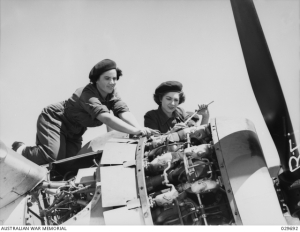Tags
choosing baby names, Disney princesses, famous namesakes, French names, German names, honouring, Latin American names, middle names, name meanings, name trends, names of bands, nicknames, rare names, scandinavian names, sibsets, surname names, triplet sets
On January 6 Selene Garton and Brendan Winter, from southern Queensland, welcomed their son in alarming circumstances. He arrived unexpectedly at home with no time to get to a hospital, and was a breech birth, being born feet first. They rang 000, and during a 17 minute phone call, the emergency medical dispatcher gave them soothing instructions on how to deliver the baby until the paramedics arrived. Selene and Brendan have named their son Izaya Gnarly to indicate the “gnarly” start he had in life, but he will be called Gnarly. I think if you want to give your child a very unusual name, that’s a good way to do it – put it in the middle, and then call them by their middle name.
When Kylee and Robbie Wieczorek from central Queensland knew that they were expecting a baby boy, they involved their seven-year-old son Owen in the name choosing process. Owen suggested the fairly awesome Thor Captain America Ironman, but his parents just laughed in a “kids say the darnedest things” sort of way. However, the name stuck, and once the baby arrived, Thor seemed both strong and different, so Owen’s choice prevailed. They dispensed with the suggested middle names, and Thor’s middle name is Cecil, after his great-grandfather. Owen may not mind that his middle name suggestions were ignored, as he is adoring having a baby brother.
Parker Bowman, aged 4, also loves being a big brother to his baby sister, Lennon Adelaide [pictured]. Their mum Marette Kiernan heard someone call out to their child Lennon on a beach in Florida, and decided she liked the name, while Adelaide is after Marette’s grandmother (dad Andrew hated the name Lennon at first, but seems to have come around). Parker has given his sister a cute nickname: Lemonade.
Natalie and Samuel from Terrigal have a baby boy named Iver, named after their favourite band, Bon Iver. They looked the name up and read it was a Scandinavian boy’s name meaning “archer” (which is said AYV-er). However, the American band’s name is French for “good winter”, and the Iver (winter) part is said ee-VAIR. I’m not sure whether Iver’s name is said the Scandinavian way, the French way, or like Ivor.
More unexpected honouring: Sarah and Jarrad Cook from Geelong wanted to name their son after their favourite AFL footballer, Daniel Menzel. Daniel wasn’t distinctive enough, so their baby son is named Menzel, and he has already met his famous namesake. Menzel is a German surname which is a pet form of Menz, short for names such as Herman and Clemens. You might recall the difficulties John Travolta had with the name of the actress Idina Menzel, from Frozen. Let’s hope no one similarly mangles Menzel’s name.
And another name honouring a sporting hero: Cassie and Kris Pyper from Kurnell in Sydney named their son Maximus John John, after the Hawaiian surfer John John Florence, because Kris is a keen surfer himself. Florence’s name is actually just John, but his mother called him John John after John F. Kennedy Jr, the son of JFK. Aptly, John John Florence is renowned for surfing the huge waves of the Banzai Pipeline often just called the Pipe), so there’s a connection with the Pyper surname.
Dimity and Michael Hand from Sydney’s northern beaches have a baby girl named Zaelia. Dimity picked out the name Zaelia when she was a little girl, because her childhood best friend had a wonderful grandmother named Zaelia. Dimity thinks that Zaelia is derived from Azalea and means “little flower”, but it’s actually a Latin American pet form of Rosalia. However, that still gives it a flowery meaning. Dimity also believes Zaelia isn’t influenced by trends, although it’s right on trend because of Zali and Zalia.
Ina and Dave Mills from the Northern Beaches welcomed their third child late last year. They already had a daughter named Ruby and a son named Roki, and hadn’t picked out a name before the birth. However, there was a painting of a caravan called Ruby and Rosie just outside the delivery room, and they took that as a sign, so their daughter is named Rosie Bea. Why Bea? Because she was meant to be, of course!
Carmen and Adrian Longmuir from Gladstone welcomed their sixth child last year and named him Tyz, said to rhyme with rise. Adrian chose the name because Tyz will be their last child, and he “ties up” the family nicely. The meaning has special poignancy because Tyz’s brother Kash passed away a year before.
Quinn and Ivy Palmer from Adelaide may look like twins, but these baby girls are actually triplets – their sister, the smallest triplet, died while still in the womb. Parents Emma-May and Jim named the third triplet Aurora, because she is their “Sleeping Beauty”.










